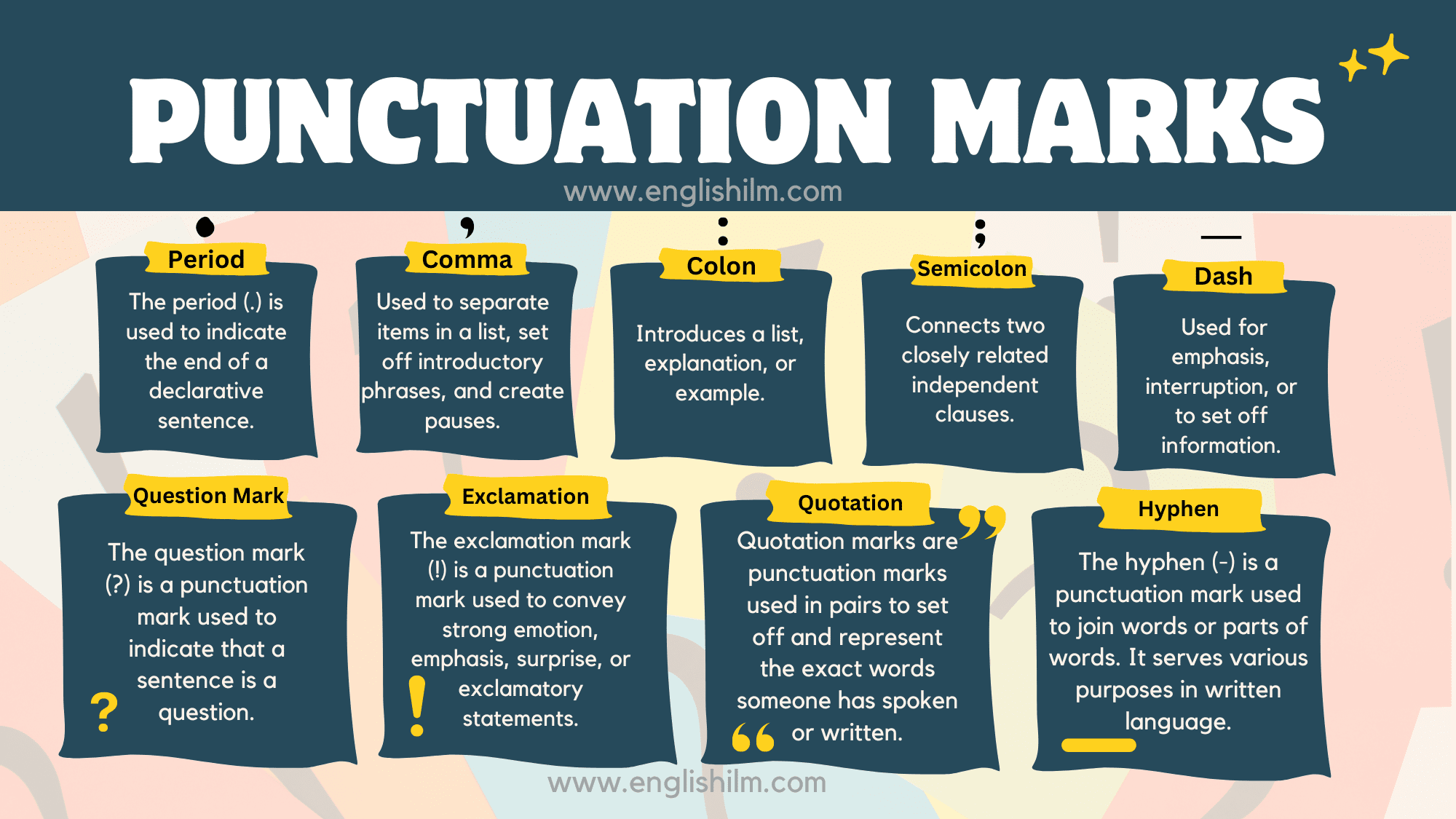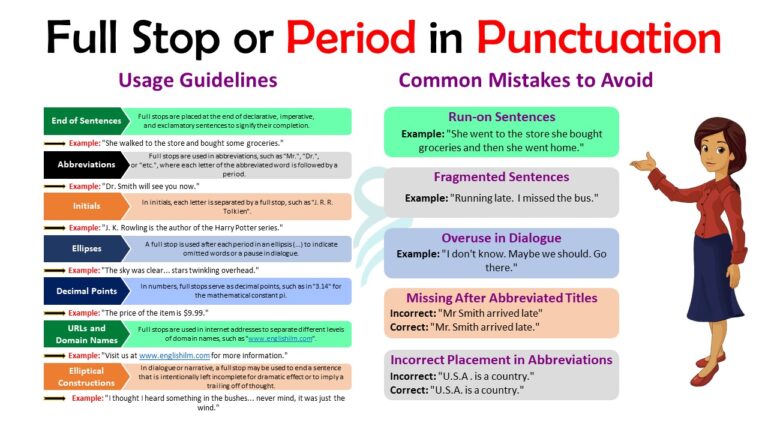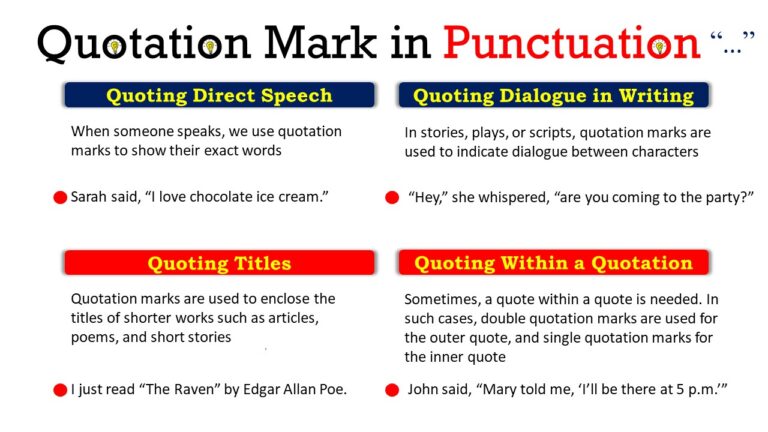In this blog post, you will learn about punctuation marks, their types, rules, and usage in English. Punctuation is essential for structuring sentences, ensuring clarity and readability. Understanding how to use punctuation marks properly will enhance your writing and communication skills. Explore the different marks, from commas to quotation marks, and improve your ability to write with precision.
Types of Punctuation Marks
Punctuation marks help structure sentences and convey the intended message more accurately. Common punctuation marks include:
- Period (.)
- Comma (,)
- Question Mark (?)
- Exclamation Mark (!)
- Colon (:)
- Semicolon (;)
- Quotation Marks (” ” or ‘ ‘)
- Parentheses (())
- Dash (— or –)
- Ellipsis (…)
- Apostrophe (‘)
- Hyphen (-)
- Slash (/)
The above-listed types are known as the different types of punctuation marks in English, which are used to clarify the meaning and indicate pauses, breaks, and intonation in English. Here, we are going to learn all about the punctuation marks that are given above in the list:
Period or Full Stop (.)
The period (.) is a punctuation mark used to indicate the end of a declarative sentence.
It is placed at the conclusion of a statement that is neither a question nor an exclamation. The period is a fundamental and widely used punctuation mark in English and many other languages.
Usage of Period or Full Stop in English:
1. End of a Sentence:
- The primary function of the period is to signal the completion of a sentence. It marks the boundary between one sentence and the next.
- Example: She went to the store.
2. Abbreviations:
- Periods are used in abbreviations to indicate missing letters or to separate the letters of an acronym.
- Example: Dr. Smith (Doctor), etc. (et cetera), U.S.A. (United States of America)
Read more about: Period or Full Stop in English
Comma (,)
A comma (,) is a punctuation mark used in writing to indicate a short pause, separate items in a list, set off introductory elements, and perform various other grammatical functions.
It is one of the most commonly used punctuation marks and plays a crucial role in clarifying the structure and meaning of sentences.
Usage of a Comma in English:
We use a comma (,) in English for the below reasons:
1. Separating Items in a List:
- Commas are used to separate items in a list of three or more elements.
- Example: I need to buy apples, bananas, and oranges.
2. Setting Off Introductory Elements:
- Commas are used to set off introductory words, phrases, or clauses at the beginning of a sentence.
- Example: After the long day, I finally sat down to rest.
3. Separating Independent Clauses:
- When two independent clauses (complete sentences) are joined by a coordinating conjunction (and, but, or, nor, for, so, yet), a comma is used before the conjunction.
- Example: She wanted to go to the concert, but she couldn’t get tickets.
4. Setting Off Nonrestrictive Elements:
- Commas are used to set off nonrestrictive (non-essential) elements within a sentence.
- Example: My friend, who lives in Paris, is coming to visit.
5. Separating Adjectives:
- Commas are used to separate two or more adjectives that modify the same noun.
- Example: It was a dark, stormy night.
6. Before Conjunctions in Compound Sentences:
- When joining two independent clauses with a coordinating conjunction, a comma is used before the conjunction.
- Example: The sun was setting, and the temperature began to drop.
Read more about: Comma in Punctuation
Question Mark (?)
The question mark (?) is a punctuation mark used to indicate that a sentence is a question.
It is placed at the end of an interrogative sentence to signal that the speaker is seeking information, confirmation, or some form of response. The question mark is a fundamental element in punctuation and is widely used in written language.
Usage of a Question Mark in English:
A question mark is used in English for the below reasons:
1. Direct Questions:
- It is used to indicate a direct question, where the speaker is asking for information.
- Example: What is your name?
2. Rhetorical Questions:
- In some cases, a question mark may be used in a sentence that is not a literal question but is meant to express a rhetorical question or make a point.
- Example: Isn’t that just wonderful?
3. Indirect Questions:
- In reported or indirect questions, the question mark is often omitted.
- Example: She asked what time it was.
Exclamation Mark (!)
The exclamation mark (!) is a punctuation mark used to convey strong emotion, emphasis, surprise, or exclamatory statements.
It is placed at the end of a sentence to indicate a sense of urgency, excitement, or a heightened emotional tone.
Usage of a Exclamation Mark in English:
An exclamation mark is used in English for the below reasons:
1. Exclamatory Sentences:
- It is used to punctuate sentences that express strong emotion or surprise.
- Example: What a beautiful sunset!
2. Commands or Imperatives with Strong Emphasis:
- It can be used in commands to convey a sense of urgency or strong emphasis.
- Example: Stop!
3. Expressing Enthusiasm or Excitement:
- It is used to convey a high level of enthusiasm or excitement.
- Example: Congratulations on your achievement!
4. Expressing Strong Agreement or Disapproval:
- It can be used to express strong agreement or disapproval.
- Example: That was an amazing performance!
5. Interjections:
- Exclamation marks are often used with interjections to convey strong emotions or reactions.
- Example: Oh no!
Read More About: Exclamation Mark in Punctuation
Colon (:)
A colon (:) is a punctuation mark consisting of two vertically aligned dots. It is used in writing to signify various relationships between the parts of a sentence.
Usage of a Colon in English:
A colon is used for the below reasons in English:
1. Introducing a List:
- A colon is often used to introduce a list of items, details, or examples.
- Example: Please bring the following items: a pen, notebook, and calculator.
2. Introducing a Quotation or Speech:
- A colon can be used to introduce a quotation, speech, or block of text.
- Example: “The teacher said: ‘Be prepared for the upcoming exam.'”
3. Separating Hours and Minutes in Time:
- Colons are used to separate hours from minutes when expressing time.
- Example: The meeting is scheduled for 3:30 P.M.
4. Separating Chapters and Verses in Biblical References:
- Colons are commonly used in biblical references to separate chapters from verses.
- Example: John 3:16.
5. Introducing an Explanation or Expansion:
- A colon can be used to introduce an explanation, elaboration, or expansion of an idea.
- Example: There was one thing left to do: apologize.
6. Formatting Ratios:
- Colons are used to express ratios or proportions.
- Example: The ratio of students to teachers is 20:1.
Read More About: Colon Rules, Usage, and Functions in English
6. Semicolon (;)
Connects two closely related independent clauses.
The semicolon (;) is a punctuation mark that serves as a more distinct break than a comma but less final than a period.
Usage of a Semicolon in English:
A semicolon is used in English for the below reasons. Take a short look:
1. Joining Independent Clauses:
The semicolon is often used to connect two closely related independent clauses (complete sentences) that are not joined by a conjunction (and, but, nor, for, so, yet).
Example:
- She finished her work; then, she went to the gym.
2. Separating Items in a List with Internal Commas:
When items in a list contain internal commas, a semicolon can be used to separate the list items more clearly.
Example:
- The conference attendees included Sarah, the marketing manager; John, the IT specialist; and Lisa, the HR representative.
3. Linking Clauses in a Series:
Semicolons can be used to separate clauses in a series, especially when the series itself contains commas.
Example:
- The team traveled to New York, New York; Los Angeles, California; and Miami, Florida.
4. Clarifying Lists in Complex Sentences:
Semicolons can help clarify lists within complex sentences.
Example:
- Before the meeting, she needed to prepare three things: a presentation for the clients; a report for her team members, highlighting key achievements; and a summary of the budget.
Read more about: Semicolon in Punctuation Mark
7. Quotation Marks (” ” or ‘ ‘)
Enclose direct speech or a quotation.
Quotation marks, also known as inverted commas, are punctuation marks used in pairs to set off and represent the exact words someone has spoken or written.
Types of Quotation Marks in English:
There are two main types of quotation marks:
Double Quotation Marks (” “):
Double quotation marks are more commonly used in American English and are the standard form for enclosing a direct quotation.
Example:
- She said, “I’ll be there at 3 o’clock.”
Single Quotation Marks (‘ ‘):
Single quotation marks are more commonly used in British English, but they are also used to enclose a quotation within a quotation or to emphasize words.
Example:
- He said, ‘The article stated, “The results are inconclusive.”‘
Usage of a Quotation Marks in English:
We use a quotation mark in English for the below reasons:
1. Place punctuation marks inside the closing quotation mark.
- Example: She said, “Please come in.”
2. Use single quotation marks for a quotation within a quotation.
- Example: He remarked, “She told me, ‘I will be there.'”
3. Alternate between double and single quotation marks if you have a quotation within a quotation.
- Example: She replied, “He told me, ‘I can’t make it,’ but I don’t believe him.”
Quotation marks play a crucial role in indicating direct speech, dialogue, or verbatim text from another source.
8. Parentheses (())
Set off additional information within a sentence.
Parentheses, often simply called “parenthesis,” are punctuation marks used in pairs to set off additional information or to indicate that a group of words or a numerical expression within them is separate from the main text. The opening parenthesis is “(” and the closing parenthesis is “)”.
Common Usage of Parentheses in English:
1. Enclosing Additional Information:
Parentheses are often used to enclose supplementary or clarifying information that is not essential to the main sentence.
Example:
- The capital of France is Paris (often called the “City of Light”).
2. Setting Off Acronyms or Abbreviations:
Parentheses can be used to provide explanations or expansions for acronyms or abbreviations.
Example:
- NASA (National Aeronautics and Space Administration) was established in 1958.
3. Indicating an Aside or Commentary:
Writers may use parentheses to insert comments or asides into the text.
Example:
- We are planning a picnic in the park (weather permitting).
4. Presenting Numerical Expressions:
Parentheses can be used in mathematical expressions to indicate order of operations.
Example:
- (2 + 3) * 4 = 20
4. Citing Sources in Writing:
In academic writing, parentheses are often used to include citations or references.
Example:
- The population increased by 10% in the last decade (Smith, 2020).
9. Dash (— or –)
Used for emphasis, interruption, or to set off information.
The dash is a punctuation mark that comes in two main forms: the en dash (–) and the em dash (—). Both dashes are longer than hyphens and are used in different contexts.
Usage of a Dash in English
En Dash (–):
The en dash is approximately the width of an uppercase “N” and is primarily used to represent a range of values, such as numbers, dates, or time spans. It can also indicate a connection or relationship between two items.
Example of a range:
- Pages 10–20
Example of a connection:
- The London–Paris flight
Em Dash (—):
The em dash is approximately the width of an uppercase “M” and is used for various purposes, including setting off a parenthetical statement, indicating a sudden change in thought, or creating emphasis.
Example of a parenthetical statement:
- The recipe—although complicated—was delicious.
Example of a sudden change in thought:
- I was going to buy a new laptop—then I realized I had a perfectly good one at home.
Example of creating emphasis:
- The winner of the competition was—unexpectedly—our youngest contestant.
10. Ellipsis (…)
Indicates omission or a trailing off of thought.
An ellipsis (…) is a set of three dots used in writing to indicate the omission of words, a pause, hesitation, or trailing off of thought. The ellipsis is often employed to create a sense of suspense, suggest incomplete thoughts, or convey a thoughtful or reflective tone.
Common Usage of an Ellipsis in English:
1. Omission of Words:
Ellipses are used to represent the omission of one or more words from a quotation or text. This is common when quoting a source but excluding irrelevant or non-essential parts.
Example:
- The original text was too long to include in its entirety, so I used an ellipsis to indicate omitted portions.
2. Indicating a Pause or Hesitation:
Ellipses can be used to show a pause in speech or writing, suggesting a moment of reflection or uncertainty.
Example:
- Well… I’m not sure how to explain it.
3. Trailing Off of Thought:
Ellipses can convey a trailing off of thought, as if the speaker or writer is leaving a statement incomplete.
Example:
- “I thought we were going to meet at… oh, never mind.
4. Creating Suspense or Emphasis:
Ellipses can be used to build suspense or emphasize a point by leaving something unsaid.
Example:
- The secret they were hiding was… astonishing.
11. Apostrophe (‘)
Indicates possession or contraction.
The apostrophe (‘) is a punctuation mark with several important uses in written language:
Usage of Apostrophe in English:
1. Contractions:
Apostrophes are used to indicate the omission of letters in contractions. In contractions, two words are combined into one, and some letters are dropped, with an apostrophe taking the place of the omitted letters.
Example:
- can’t” (cannot), won’t (will not), it’s (it is or it has)
2. Possessive Forms:
Apostrophes are used to indicate possession. When adding the possessive form to a singular noun, an apostrophe followed by an “s” is used. For plural nouns ending in “s,” an apostrophe is placed after the “s.”
Examples:
For singular possessive:
- The cat’s tail (the tail of the cat)
For plural possessive:
- The dogs’ leashes (the leashes of the dogs)
3. Pluralization of Letters, Numbers, and Symbols:
Apostrophes are used to form the plural of letters, numbers, and symbols to avoid confusion.
Example:
- Mind your p’s and q’s. (referring to individual letters)
4. Indicating Time or Quantity:
Apostrophes are used in abbreviations to indicate omitted numbers or letters.
Example:
- The ’60s (referring to the 1960s), mind your p’s and q’s (referring to pints and quarts)
12. Hyphen (-)
Connects words or parts of words, often in compound words.
The hyphen (-) is a punctuation mark used to join words or parts of words. It serves various purposes in written language.
Usage of an Hyphen in English:
1. Word Joining:
Hyphens are used to connect words and form compound words.
Example:
- mother-in-law, well-being, high-speed
2. Hyphenation of Prefixes and Suffixes:
Hyphens are used to join prefixes or suffixes to words, especially when the addition of the affix might cause confusion or ambiguity.
Example:
- pre-approval, re-examine, anti-inflammatory
3. Number Range:
Hyphens are used to indicate a range of numbers.
Example:
- pages 10-15, the years 2000-2020
4. Joining Words in Adjectival Phrases:
Hyphens are used to connect words in compound adjectives that come before a noun.
Example:
- a well-known author, a three-year-old child
5. Joining Words in Adverbs Ending in -ly:
In some cases, hyphens are used to connect two words in adverbs that end in -ly.
Example:
- a quickly-growing plant
6. Clarifying Pronunciation:
Hyphens can be used to break a word at the end of a line of text to indicate pronunciation or to avoid awkward spacing.
Example:
- After a long day, she felt over-whelmed.
13. Slash (/)
Separates alternatives, such as in a date (mm/dd/yyyy) or in abbreviations. The slash (/) is a punctuation mark that is also known as a forward slash.
Common Usage of a Slash in English:
1. Separating Alternatives:
The slash is commonly used to indicate a choice or alternative between two words or phrases.
Example:
- Please bring a pencil/paper.
2. Indicating a Line Break in Poetry or Song Lyrics:
The slash is used to represent a line break when quoting poetry or song lyrics.
Example (Poetry):
- Shall I compare thee to a summer’s day? / Thou art more lovely and more temperate.
3. Abbreviations and Acronyms:
The slash can be used in abbreviations or acronyms, often to represent ‘or.’
Example:
- w/o (without), and/or (and or or)
4. Separating Dates:
The slash is used to separate parts of a date, especially in numerical format.
Example:
- 04/15/2022 (April 15, 2022)
5. Indicating a Ratio:
The slash is used to represent a ratio or relationship between two quantities.
Example:
- The ratio of boys/girls in the class is 2:1.
6. File Paths in Computing:
In file paths for computer systems, the slash is used to separate directories.
Example:
- C:/Documents/Files
Punctuation Marks Guide
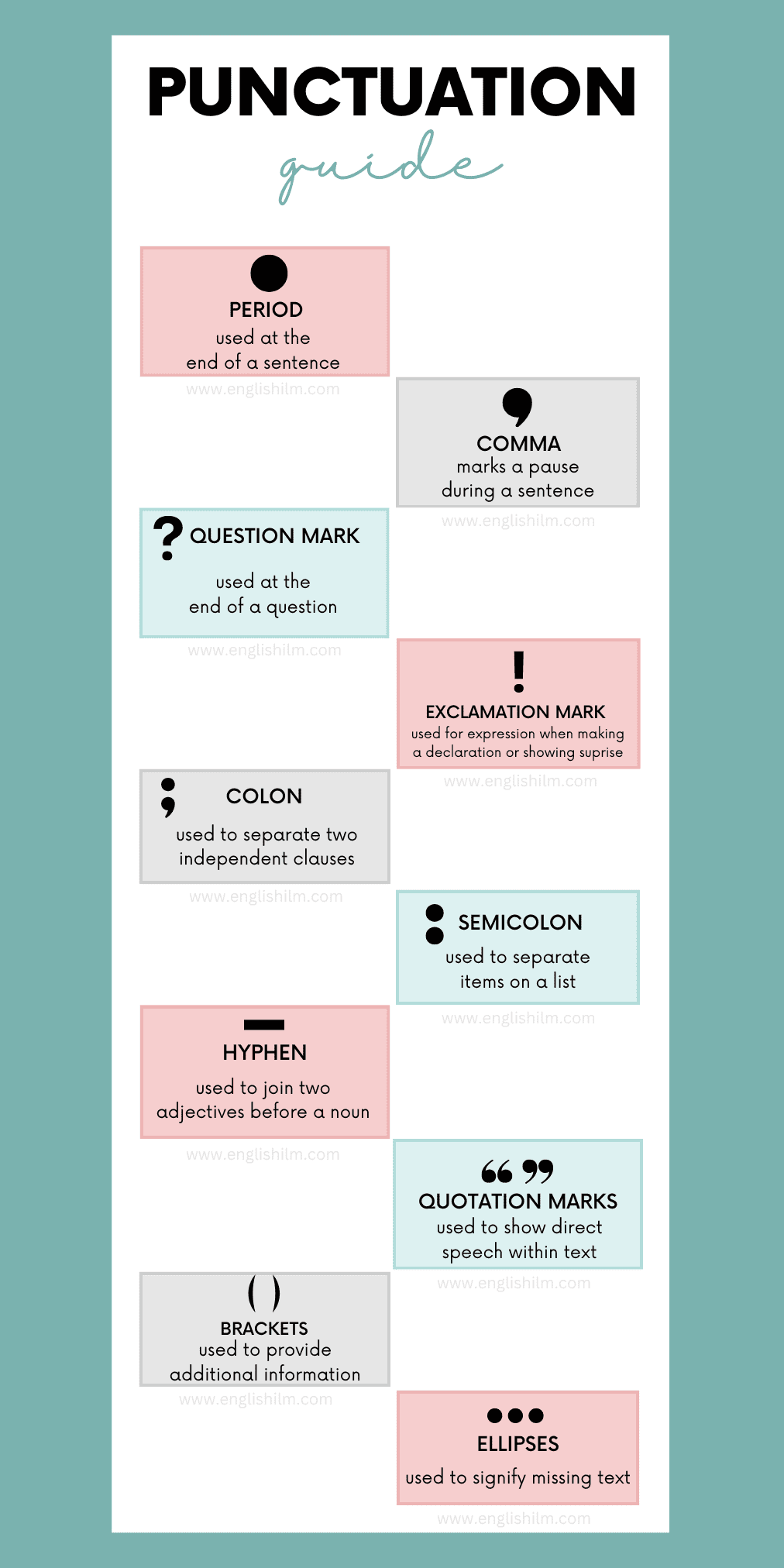
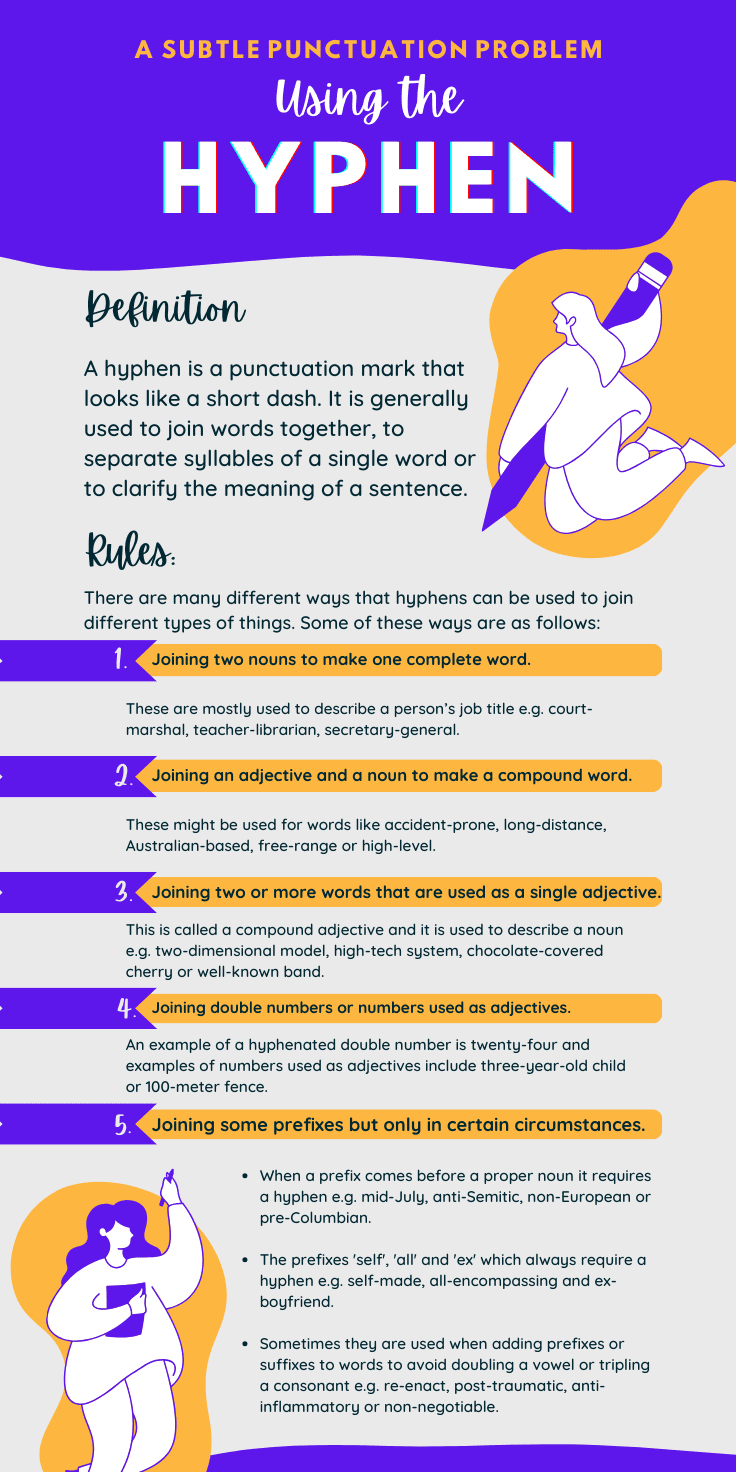
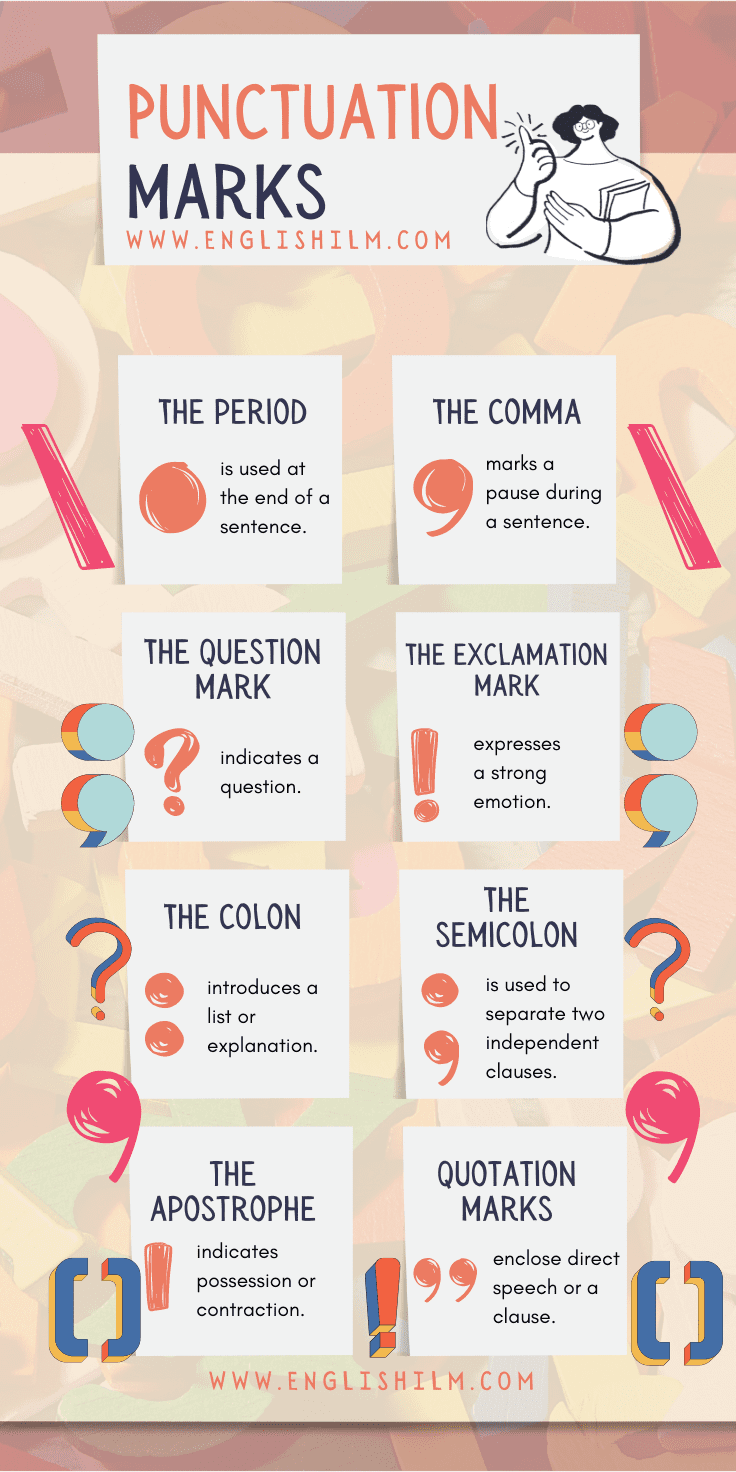
Read More

